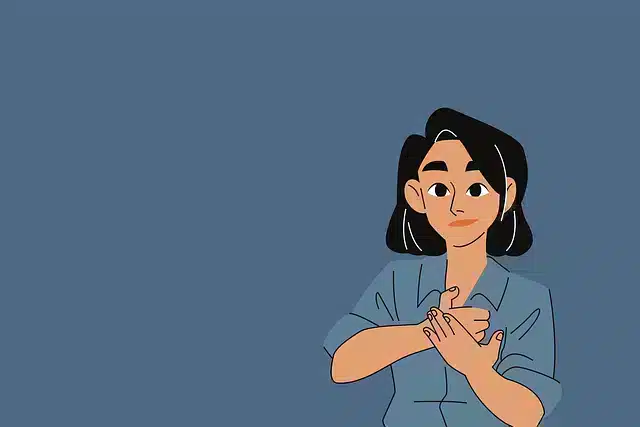In June 2021, audiences in Geneva were able to take part in the first one-man show to be simultaneously translated into sign language. It was a first in Switzerland, thanks to the comedian Antoine Maulini. Accompanied by a sign language interpreter, the comedian made his show accessible to the hearing impaired.
It’s true that in everyday life, when we say “translator”, we immediately think of spoken languages: we wonder how many languages translators and interpreters speak; we think of translations of novels and films etc. It’s also true that when we say “interpreter”, we immediately think of “translator”. Unfortunately, not enough is said about sign language translators and interpreters, except during televised speeches by politicians, when we see a ‘small’ person interpreting in sign language at the bottom of our screen.
So who are those people at the bottom of our screens?
In sign language, as with spoken languages, there is translation (from the written) and interpretation (wnich is oral). The difference with interpreting is that a sign language interpreter can work either with a spoken language or a visual-gestural language.
In France, there are only one hundred sign language interpreters/ translators. Which is clearly very few given the need.
The lack of translators is reflected both in France and Switzerland. The court in Bobigny, France, is the largest in the country, with the largest number of interpreters. However, sign language is rarely used, much to the disappointment of those we spoke to.
In June 2022. the Swiss National Council voted through a bill with the aim of recognising sign language in law. Ironically, people with hearing difficulties were not able to follow the debate for the lack of sign language interpreters. https://www.letemps.ch/suisse/personnes-sourdes-se-entendre-parlement
What daily challenges do they face?
Sign language interpreters are part of our everyday lives, but we don’t necessarily realise it. Whatever the field, everyone faces challenges: they can be legal (as we saw earlier), but also political or artistic.
The political first, because that’s what we have seen in France. When Covid arrived in 2020, we partook in countless televised speeches by the President and his ministers. Every one of these broadcasts was interpreted by sign language interpreters in order that everyone could access them.
Then, in 2022, came the presidential debates and the election. Sign language interpreting came to the fore as interpreters found themselves having to translate the candidates’ idioms (which are not very common in everyday language), such as “Ripoliner la façade” – to give something a face-lift.
However, the election period was not so entertaining for everyone. The visually and hearing impaired were nevertheless excluded from the broadcasts because they were not accessible, and it was difficult to follow the televised debates.
In addition to legal and political life, some sign language interpreters are involved in culture. At a Belgian festival in July 2022, the artist Barcella brought on Cindy Baraté , a sign language interpreter, for a slam poetry performance. A perfomance which allowed the hearing impaired to fully enjoy the show.
As well as having interpreters at concerts or events, some translators work in the field of audio description for the visually impaired. Audio description is developing in its own right: it is increasingly used on television, whether for programmes or football matches.
What are the options for the hearing impaired?
Despite the shortage of sign language interpreters, new technologies are being developed to countervail their work and help the hearing impaired.
According to the World Health Organisation, over 450 million people have difficulty following a conversation because of hearing problems. With few interpreters and translators, this disability can be a brake on day-to-day living and life at work. That’s why two entrepreneurs created Ava, an intellegint transcription platform, in 2022 This tool allows the hearing impaired to simultaneously read what is being said to them thanks to a voice sensor and automatic translation. Colour coding allows the identification of each speaker.
A little over a year ago, a student created an equally useful IT tool which allows sign language to be translated. This programme recognises gestures rather than voices, before translating them.
What does the future hold?
Firstly, there is a legislative future, as we have seen in Switzerland, where it is important to enshrine sign languages in law. This will encourage the development and recognition of the profession of sign language translators and interpreters.
But to be heard, you have to be seen. And that’s the aim of the Clin d’œil festival which takes place in Reims this year. The international festival of art in sign language, taking place in Reims since 2003. The visually and hearing impaired from across the globe take part and celebrate. If you want to discover the festival, make sure you are in the company of an interpreter otherwise, this time, it will be you who can’t be understood!
